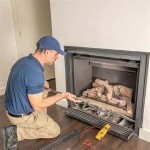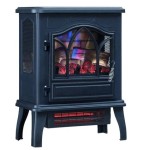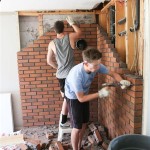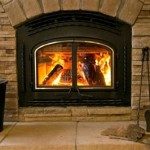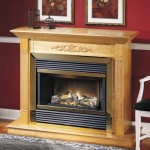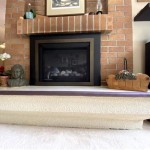Sealing A Fireplace Surround: A Comprehensive Guide
A fireplace surround serves as an aesthetic frame for the firebox, contributing significantly to the room's overall ambiance and style. However, maintaining a fireplace surround involves more than just regular cleaning. Sealing it properly is crucial for preserving its appearance, protecting it from damage, and ensuring the safety and efficiency of the fireplace itself. This article provides a detailed guide on the importance of sealing a fireplace surround, the types of sealants available, and the step-by-step process involved in effectively sealing it.
Understanding the need for sealing a fireplace surround begins with recognizing the environmental factors it is exposed to. The area around a fireplace is routinely subjected to temperature fluctuations, soot and ash accumulation, and potential water exposure, especially if the chimney experiences leaks. These elements can deteriorate the surround's material over time, leading to cracking, staining, and structural weakening. Sealing acts as a protective barrier, preventing these damages and prolonging the lifespan of the surround.
Furthermore, gaps and cracks around a fireplace surround can be pathways for air leaks, compromising the energy efficiency of the home. Cold drafts can enter the room during the winter, while heated air can escape, increasing heating costs. Sealing these openings helps to maintain a consistent temperature within the room and reduces energy waste. In addition, proper sealing assists in preventing the spread of smoke and carbon monoxide into the living space, enhancing the safety of the occupants.
Choosing the Right Sealant
Selecting the appropriate sealant is a critical step in the sealing process. The choice depends on several factors, including the material of the surround (e.g., brick, stone, wood, or metal), the size of the gaps or cracks, and the desired aesthetic finish. Several types of sealants are commonly used for fireplace surrounds, each with its unique properties and applications. These include heat-resistant caulk, silicone sealant, masonry sealant, and fire-rated sealant.
Heat-resistant caulk is specifically formulated to withstand high temperatures, making it suitable for areas directly exposed to heat from the firebox. It is typically made from silicone or acrylic latex and can tolerate temperatures up to several hundred degrees Fahrenheit. This type of caulk is ideal for sealing gaps between the firebox and the surround, as well as any cracks in the surround material that are close to the heat source. When selecting heat-resistant caulk, it is important to verify its temperature rating and ensure it meets the specific requirements of the fireplace.
Silicone sealant is a versatile option that offers excellent water resistance and flexibility. It is suitable for sealing gaps and cracks in various materials, including brick, stone, and metal. Silicone sealant is available in different colors, allowing for a seamless match with the surround's existing finish. However, standard silicone sealant is not heat-resistant and should not be used in areas directly exposed to high temperatures. High-temperature silicone sealants are available, but they often have a more limited color selection.
Masonry sealant is specifically designed for sealing brick and stone surfaces. It is typically made from acrylic latex or polyurethane and provides excellent adhesion and durability. Masonry sealant is resistant to weathering and UV radiation, making it suitable for both interior and exterior applications. It is also paintable, allowing for further customization of the finish. When using masonry sealant, it is important to ensure the surface is clean and dry to maximize adhesion.
Fire-rated sealant is a specialized product designed to prevent the spread of fire and smoke. It is often used in commercial buildings and multi-family residences to seal penetrations through fire-rated walls and floors. While not always necessary for residential fireplaces, fire-rated sealant can provide an extra layer of protection, especially if the fireplace is located near combustible materials. It is important to follow the manufacturer's instructions carefully when applying fire-rated sealant to ensure it provides the intended level of fire protection.
Before selecting a sealant, it is advisable to test a small, inconspicuous area of the surround to ensure compatibility and desired aesthetic results. This test can help to identify any potential issues, such as discoloration or poor adhesion, before applying the sealant to the entire surround.
Preparing the Fireplace Surround
Proper preparation is essential for achieving a durable and aesthetically pleasing seal. This involves cleaning the surround, removing any existing sealant or debris, and ensuring the surface is dry. Neglecting these steps can compromise the adhesion of the sealant and reduce its effectiveness.
The first step in preparing the fireplace surround is to thoroughly clean the surface. This can be done using a mild detergent and water, followed by a thorough rinsing and drying. For stubborn stains or soot deposits, a specialized masonry cleaner or a degreaser may be necessary. It is important to avoid using harsh chemicals or abrasive cleaners, as they can damage the surround's finish. A stiff brush can be used to scrub the surface and remove any loose debris.
Next, any existing sealant or caulk must be removed. This can be accomplished using a utility knife, a caulk removal tool, or a heat gun. A utility knife is useful for cutting through old sealant, while a caulk removal tool can help to scrape away the residue. A heat gun can soften the sealant, making it easier to remove. Care should be taken not to damage the surround's surface during this process. After removing the bulk of the sealant, a solvent such as mineral spirits or acetone can be used to clean any remaining residue.
Once the surface is clean and free of old sealant, it is important to inspect for any cracks or damages. Small cracks can be filled with sealant, while larger cracks or holes may require patching with a suitable filler material, such as masonry patch or wood filler, depending on the surround's material. The filler should be applied according to the manufacturer's instructions and allowed to dry completely before proceeding with the sealing process. Once the filler is dry, it should be sanded smooth to blend seamlessly with the surrounding surface.
The final step in preparing the fireplace surround is to ensure the surface is completely dry. This is especially important if the surround has been cleaned with water or if the weather is humid. Moisture can interfere with the adhesion of the sealant and lead to premature failure. The surround should be allowed to air dry for at least 24 hours, or longer if necessary, before applying the sealant. A dehumidifier can be used to speed up the drying process in humid environments.
Applying the Sealant
The application of the sealant requires careful attention to detail to ensure a neat and effective seal. This involves using appropriate tools, applying the sealant evenly, and tooling the sealant for a smooth finish. Rushing the process or using improper techniques can result in a messy or ineffective seal.
To apply the sealant, a caulk gun is typically used. The caulk gun should be loaded with the sealant cartridge, and the nozzle should be cut at a 45-degree angle to create an appropriate bead size. The bead size should be slightly larger than the gap being sealed to ensure complete coverage. It is recommended to practice applying the sealant on a piece of scrap material before working on the fireplace surround to get a feel for the caulk gun and the sealant flow.
Start by applying a continuous bead of sealant along the gap or crack, maintaining a consistent pressure on the caulk gun. Move the caulk gun slowly and steadily, ensuring the sealant fills the entire gap. Avoid applying too much sealant at once, as this can make it difficult to tool and create a messy finish. If necessary, apply multiple thin layers of sealant rather than one thick layer.
After applying the sealant, it should be tooled to create a smooth and professional-looking finish. Tooling involves using a tool, such as a caulk smoothing tool, a wet finger, or a damp sponge, to press the sealant into the gap and remove any excess. The tool or finger should be wetted with water or mineral spirits to prevent the sealant from sticking. Drag the tool or finger along the sealant bead, applying gentle pressure to create a smooth, concave surface. Wipe away any excess sealant with a clean, damp cloth.
For corners and edges, a corner-tooling tool can be used to create a clean and precise finish. The corner-tooling tool should be pressed into the sealant at a 45-degree angle, creating a smooth transition between the two surfaces. Wipe away any excess sealant with a clean, damp cloth.
After tooling the sealant, allow it to dry completely according to the manufacturer's instructions. The drying time can vary depending on the type of sealant and the environmental conditions. Avoid touching or disturbing the sealant during the drying process, as this can compromise the finish. Once the sealant is dry, inspect it for any imperfections or gaps. If necessary, apply a second coat of sealant to fill any remaining gaps or imperfections.
Following these steps will ensure a well-sealed fireplace surround, protecting it from damage, improving energy efficiency, and enhancing the safety of the home. Regular inspection and maintenance of the sealant will help to prolong its lifespan and maintain its effectiveness.

How To Seal Marble Shine Your Light

Sealing Split Stone Natural Edge Hearth

How To Seal A Stone Fireplace Hearth Old World Stoneworks
Sealing Fireplace Insert Surround Plate Hearth Com Forums Home

How To Seal Marble Shine Your Light
Sealing Air Gap Between Sheet Metal Surround And Brick Hearth Face Com Forums Home

Closing Off A Fireplace Here S What You Need To Know Darden Building Materials

How To Seal Marble Shine Your Light

Follow These Suggestions To Prevent A Drafty Fireplace

Seal Around The Fireplace Hearth
Related Posts

